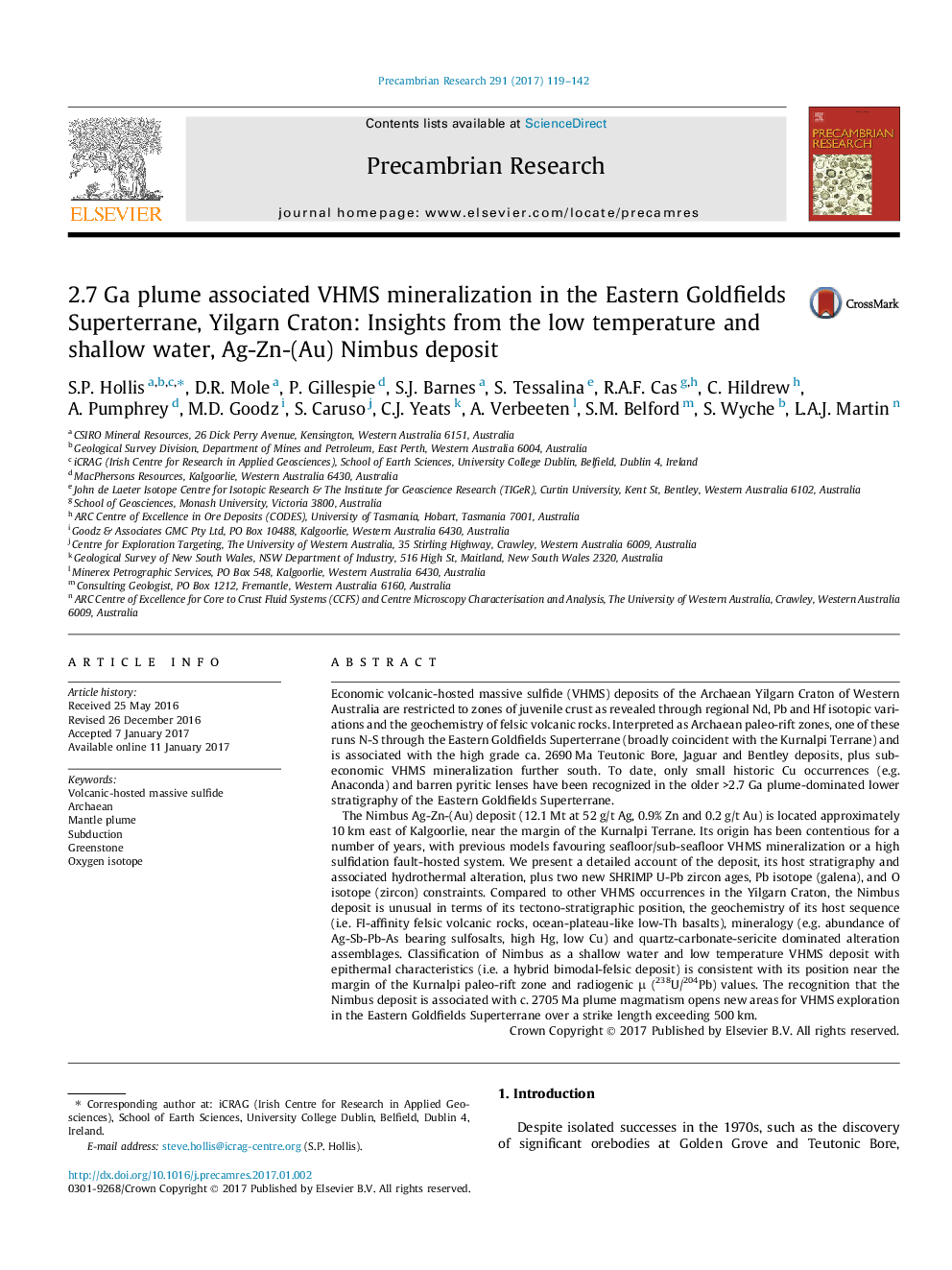| کد مقاله | کد نشریه | سال انتشار | مقاله انگلیسی | نسخه تمام متن |
|---|---|---|---|---|
| 5784887 | 1639584 | 2017 | 24 صفحه PDF | دانلود رایگان |

- VHMS deposits in the Yilgarn Craton occur in linear paleo-rift zones.
- The Nimbus deposit is unique in terms of its stratigraphic position, geochemistry and mineralogy.
- It represents a sub-seafloor, shallow water and low temperature VHMS deposit.
- The host stratigraphy forms part of the 2.7Â Ga plume associated Kambalda Sequence.
- This research opens up new areas for exploration over a strike length of 500Â km.
Economic volcanic-hosted massive sulfide (VHMS) deposits of the Archaean Yilgarn Craton of Western Australia are restricted to zones of juvenile crust as revealed through regional Nd, Pb and Hf isotopic variations and the geochemistry of felsic volcanic rocks. Interpreted as Archaean paleo-rift zones, one of these runs N-S through the Eastern Goldfields Superterrane (broadly coincident with the Kurnalpi Terrane) and is associated with the high grade ca. 2690 Ma Teutonic Bore, Jaguar and Bentley deposits, plus sub-economic VHMS mineralization further south. To date, only small historic Cu occurrences (e.g. Anaconda) and barren pyritic lenses have been recognized in the older >2.7 Ga plume-dominated lower stratigraphy of the Eastern Goldfields Superterrane.The Nimbus Ag-Zn-(Au) deposit (12.1 Mt at 52 g/t Ag, 0.9% Zn and 0.2 g/t Au) is located approximately 10 km east of Kalgoorlie, near the margin of the Kurnalpi Terrane. Its origin has been contentious for a number of years, with previous models favouring seafloor/sub-seafloor VHMS mineralization or a high sulfidation fault-hosted system. We present a detailed account of the deposit, its host stratigraphy and associated hydrothermal alteration, plus two new SHRIMP U-Pb zircon ages, Pb isotope (galena), and O isotope (zircon) constraints. Compared to other VHMS occurrences in the Yilgarn Craton, the Nimbus deposit is unusual in terms of its tectono-stratigraphic position, the geochemistry of its host sequence (i.e. FI-affinity felsic volcanic rocks, ocean-plateau-like low-Th basalts), mineralogy (e.g. abundance of Ag-Sb-Pb-As bearing sulfosalts, high Hg, low Cu) and quartz-carbonate-sericite dominated alteration assemblages. Classification of Nimbus as a shallow water and low temperature VHMS deposit with epithermal characteristics (i.e. a hybrid bimodal-felsic deposit) is consistent with its position near the margin of the Kurnalpi paleo-rift zone and radiogenic μ (238U/204Pb) values. The recognition that the Nimbus deposit is associated with c. 2705 Ma plume magmatism opens new areas for VHMS exploration in the Eastern Goldfields Superterrane over a strike length exceeding 500 km.
Journal: Precambrian Research - Volume 291, April 2017, Pages 119-142